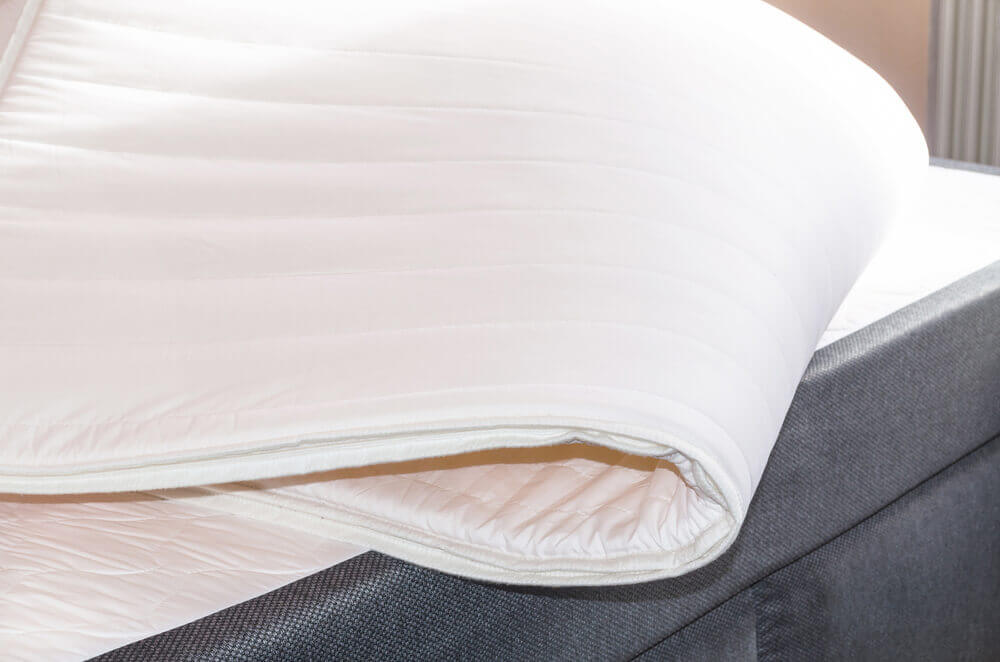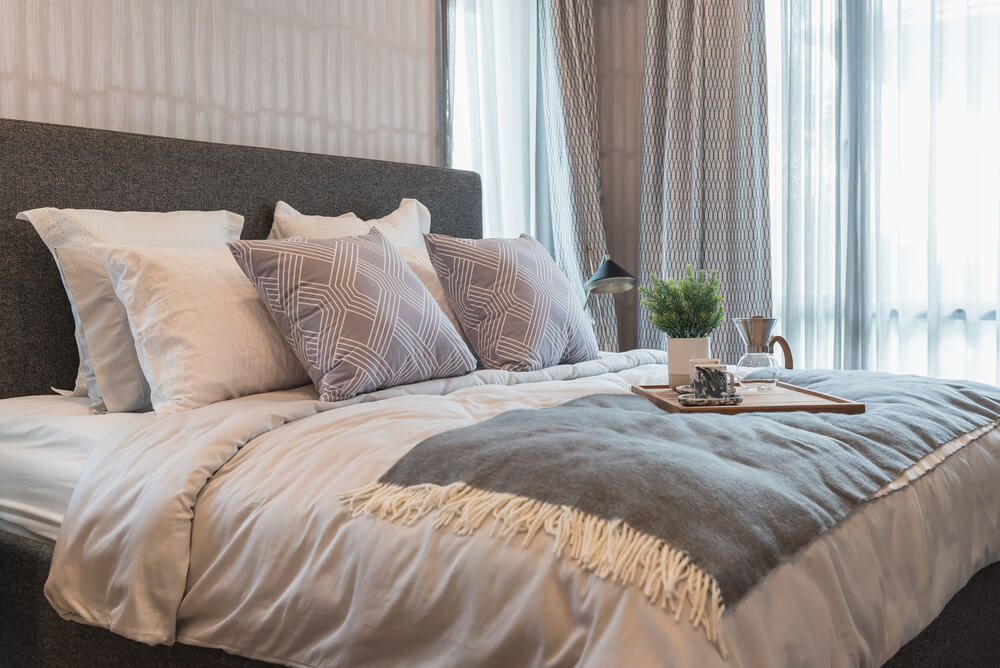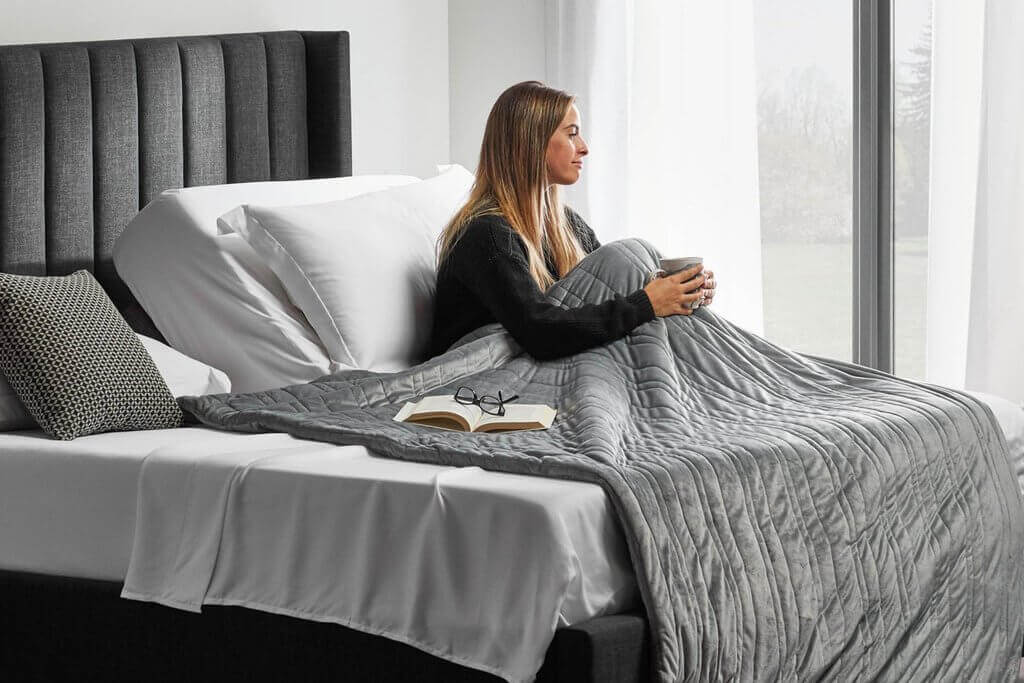Staying warm in bed is one of the most important skills in colder environments. Being cold can not only deteriorate your sleep quality but also make it pretty difficult to fall asleep in the first place. Chilling winter nights aren’t going anywhere. It’s time to prepare for them. It makes for little to no point to crawl into the bed when you’re freezing and still shivering.
It’s not difficult to stay warm in bed without touching heat. Let the ambient temperature stay where it is – you just need to make sure your body and bed are both warm for you to feel comfortably snug and relaxed. This can be done by combining several “hacks”.
We’re going to talk about time-tested and reliable bed hacks that help you keep warm. Note that we’re not talking about installing a new heating system or changing the thermostat settings. These hacks revolve around keeping your body and bed warm specifically. But before that, why do we wish to stay warm?
Can Being Cold Stop You From Sleeping?
Most definitely it can. Cold is a type of discomfort that hampers sleep. Unlike another discomfort like pain, which you can constantly feel, often it becomes hard to pinpoint the cause of your inability to fall asleep if it’s the chill of the night.
It’s also risky to sleep in cold room temperature. For example, a study published in the Journal of Physiological Anthropology found that “Mortality due to ischemic heart disease is not related to the low outside temperature, but to the low living-room temperatures and limited bedroom heating in the winter”.
The effects of the thermal environment are pretty pronounced on sleep and your circadian rhythm.
Cold rooms are different from cool rooms. A slightly cooler room is actually recommended to sleep in as it helps the body produce more melatonin as well as allows some people to get rid of insomnia and difficulty in sleeping. But feeling cold is a completely different story altogether.
What’s The Best Temperature For Sleep?

The best temperature to sleep in is approximately between 60-67 degrees Fahrenheit or 15.6 to 19.4 degrees Celsius. 65 Fahrenheit will be the ideal room temperature to sleep in for most people.
Note that it’s the room temperature we’re talking about, which doesn’t necessarily translate to the bed temperature. Depending on what you’re wearing and the bed itself, the room temperature can be marginally different from the bed temperature.
How To Get Warm In Bed If You Are Feeling Cold At Night?
Feeling cold at night is not an ideal situation to fall asleep in. Naturally, if you can’t turn up the temperature in the room then the best you can do is make your body and bed warmer. Contrary to what you might think, it’s actually surprisingly easy.
Here are 11 hacks, sort of, which you can leverage for a warmer sleep in those cold nights that chill you to the bone.
Room temperature
The room temperature is single-handedly the most important factor. There are plenty of heat sources around us but depending on what place and situation you are in, you might only have a handful available, or maybe even none.
In that case, it helps to trap the heat by insulating it within the room.
Bedding and sleepwear
Thicker and warmer bedding and sleepwear both help. If you’re not already, start wearing socks and a comfortable hat to sleep in. Choose merino or cashmere wool socks for a natural circulatory booster.
The more you can cover your body, the more the heat will stay trapped.
Sleeping with pets or partner

You can sleep with your pets to keep each other warm. The larger and fluffier the pet, the warmer you both will be. Needless to say, this hack also works with multiple pets. What better way to enjoy a cold winter night that snuggling with your favorite companions?
As body heat is significantly better for warming than clothes, sleeping with your partner will keep you both warm. Don’t use separate blankets if you’re sleeping with your partner to combine the warmth.
Human bodies produce a lot of heat and when put close next to each other they can do away with that chill.
Electric warm pads

Electric heating pads are used to warm parts of your body. Although typically used to apply localized heat to dilate blood vessels, they can be used to make parts of your body warm as well.
Note that you can only target one part at a time with a heating pad.
Heat up bed with a hairdryer
Do you sleep fast? Well then all you might need is an initially warm surface and blankets to cover the rest of the night. And this can be achieved virtually effortlessly with a simple hairdryer.
Use the hairdryer on your bed first. Don’t leave any spot even if you only sleep in a limited area because heat will quickly dissipate to the colder regions. Once your bed is warm enough, also warm the blankets slightly and get in.
Sometimes it takes a while for the bed to get warm with your body heat and after that you’re fine. If that’s the case then the hairdryer can save you from that initial freezing feeling when the bed is still getting warmer by doing the same thing much faster.
Be cautious though! Some fabrics have a low burning point. If you blow concentrated hot air from the hairdryer for long, they might even catch fire.
Use a memory foam topper

A memory foam topper is a layer that you put on top of your mattress. This is memory foam, which means that this layer will slowly adapt to your body over time. When you’ve used one enough, you’ll find yourself in a snug and warm spot whenever you go to the bed.
It makes sleeping much more comfortable as well.
Bed layering

A change in your bed layering is in order if you’ve not specifically prepared it for the winter. Make your bed out of the most winter-friendly fabrics. You have to make a layer both beneath your body and above you.
Here’s how to layer from the bottom up in order to create the warmest bed, just in time for winter:
- Mattress Topper: start with a memory foam or microfiber bed topper and keep it clean by using a protector.
- Underblanket: layer it underneath your fitted sheet and choose a wool underblanket.
- Bed sheets: choose flannel sheets.
- Blanket: Place it over your top sheet.
- Quilt or Duvet: the last layering.
Use heavier cotton sheets and fleece-based fabrics. Also use top sheets, multiple comforters, coverlets, and multiple pillows to stay warm and snug.
Drink hot beverages before bedtime
Drinking hot beverages such as hot chocolate or lukewarm milk can improve your sleep. They attune your body temperature for the cold and also give you a feeling of comfort and satiation, which helps further in falling asleep.
Pick the warmest blanket for the bed

Blankets are the most important part. You need to pick the warmest you can find on the market.
- Wool blankets are durable and fit for both, summer and winter.
- Cashmere blankets come from cashmere wool, noted particularly for their comfort, softness, and luxury.
- Weighted blankets (also known as gravity blankets) can be made from any fabric, and weigh 5 to 30 lbs. Though predominantly used for therapeutic reasons (to mimic deep pressure stimulation), they can protect you really well against the cold by keeping you considerably warmer.
- Thick cotton fleece blankets are one of the most popular types of winter blankets. They are also very soft and comfortable and are a little more expensive (especially the 100% cotton ones).
- Comforters are another layer to pay attention to. Called duvets in British, comforters are essentially large pouches filled with fibers such as cotton, wool, silk, or polyester. The job of a comforter is to keep you warm.
How To Stay Warm At Night: Final Word
Freezing cold temperatures are extremely uncomfortable. Discomfort and sleep quality don’t generally go well with each other and are, for all purposes, conversely related to each other.
Making your bed and your body warmer when you go to sleep is a much-needed skill to acquire in colder climates and especially during winters. It might sound quite daunting to do – especially when your enemy is the indifferent cold itself. How could you possibly make yourself warm in a cold ambient temperature?
But hopefully, you’ve learned that it’s not that hard. You can have a much more comfortable night by following a few simple steps and combining them.
And don’t forget to wear warm clothing! As per a study published in the Nature and Science of Sleep, optimizing sleepwear with seasonal changes is extremely important. If your sleepwear isn’t efficient for winter then the bed or blankets won’t make that much of a difference.
